The BIOPAC GASSYS3 provides detailed insights on human subjects’ responses in a variety of research applications, such as exercise physiology, sports science, biomedical engineering, psychophysiology, and many product development and consumer neuroscience applications.
GASSYS3 Benefits
- CO2 sensor range extended from 5% to 10%, important for VO2 Max measurements.
- Integrated heater lowers the relative humidity to prevent condensation from forming in and around the sensors.
- Integrated environmental sensors for both ambient and chamber air. These sensors are read in serially by the MP36 (under software control) and are used to adjust measurements based on changes in temperature, relative humidity, and barometric pressure.
- Small blower inside chamber, which helps mix the air, improves CO2 sensor response time and helps prevent condensation inside the CO2 sensor.
- Sealed Chamber prevents ambient air from corrupting the chamber air between expired air cycles.
- New design results in less air restriction.
- Auto-voltage calibration and memory circuitry added to the O2 and CO2 circuits to improve accuracy.
Measure expired O2 and CO2 concentrations
- The non-rebreathing “T” valve directs only expired air through the GASSYS3, which is designed to work with saturated expired air. The mixing chamber portion of the GASSYS3 acts to average respiratory outflows. This averaging effect causes the CO2 and O2 concentrations to vary in accordance with the mean values resident in multiple expired breaths.
- For resting measurements, the airflow transducer can be placed on the output port of the GASSYS3.
- For exercise measurements, the airflow transducer is placed on the inspired side of the T-valve to reduce the chance of condensation affecting airflow accuracy.
Compatibility
GASSYS3 works with MP36 with BSL 4.1.3 or above OR MP36R with AcqKnowledge 5.0.3 or above; not compatible with MP45.
Setup & Accessories
Required
- MP36 or MP36R Data Acquisition Unit
- Airflow Transducer SS11B
- T-Valve
option 1: high flow T-valve (AFT21 35 mm OD) + Disposable filter with mouthpiece (AFT36) + Disposable Nose Clip (AFT 3)
option 2: Facemask with integrated T-valve (AFT25) + Syringe coupler, 35 mm to 25 mm (AFT11A)
option 3: low flow non-rebreathing T-valve (AFT22) + smooth bore tubing (AFT7-L) + flexible coupler (AFT11E). - Calibration syringe—required to flush the chamber during setup if not performing gas calibration
option 1: AFT27 3 L calibration syringe or equivalent 2, 3, 5- or 7-liter syringe
option 2: GASKIT3 calibration kit, which will include an AFT27 - Airflow & Gas Analysis Accessories
Choose AFT Series tubing, couplers, etc. accessories to suit your protocol
Optional
- Tripod for securing SS11LB
- AFT24 Head support for AFT21 T-valve
- GASKIT3 Gas & Flow Calibration Kit. This Cal Kit includes most everything required to calibrate the GASSYS3 and an SS11LB airflow transducer: Short Chamber with connectors for calibration gases to be injected, tubing, regulator, and coupler.
- To add Heart Rate from ECG:
– Electrode lead set for ECG (SS2LB)
– Disposable ECG electrodes x 3 (EL503)
– Electrode Gel: GEL1 (50g) or GEL100 (250g)
– Skin Prep Gel (ELPREP) or alcohol
Sample Setups
Citations
These Gas Analysis System Citations used BIOPAC’s previous Gas Analysis System GASSYS2—the new GASSYS3 can be used in place of the older GASSYS2 for these and other protocols.
Part #: GASSYS3
Product Type
Integrated Solution
O2, CO2, humidity, pressure, and barometric sensors
Exercise Physiology
High-quality data from resting or exercising subjects
Measure V̇O2, V̇CO2, RER, EE, REE, RMR
Accurate CO2 and O2 Concentrations
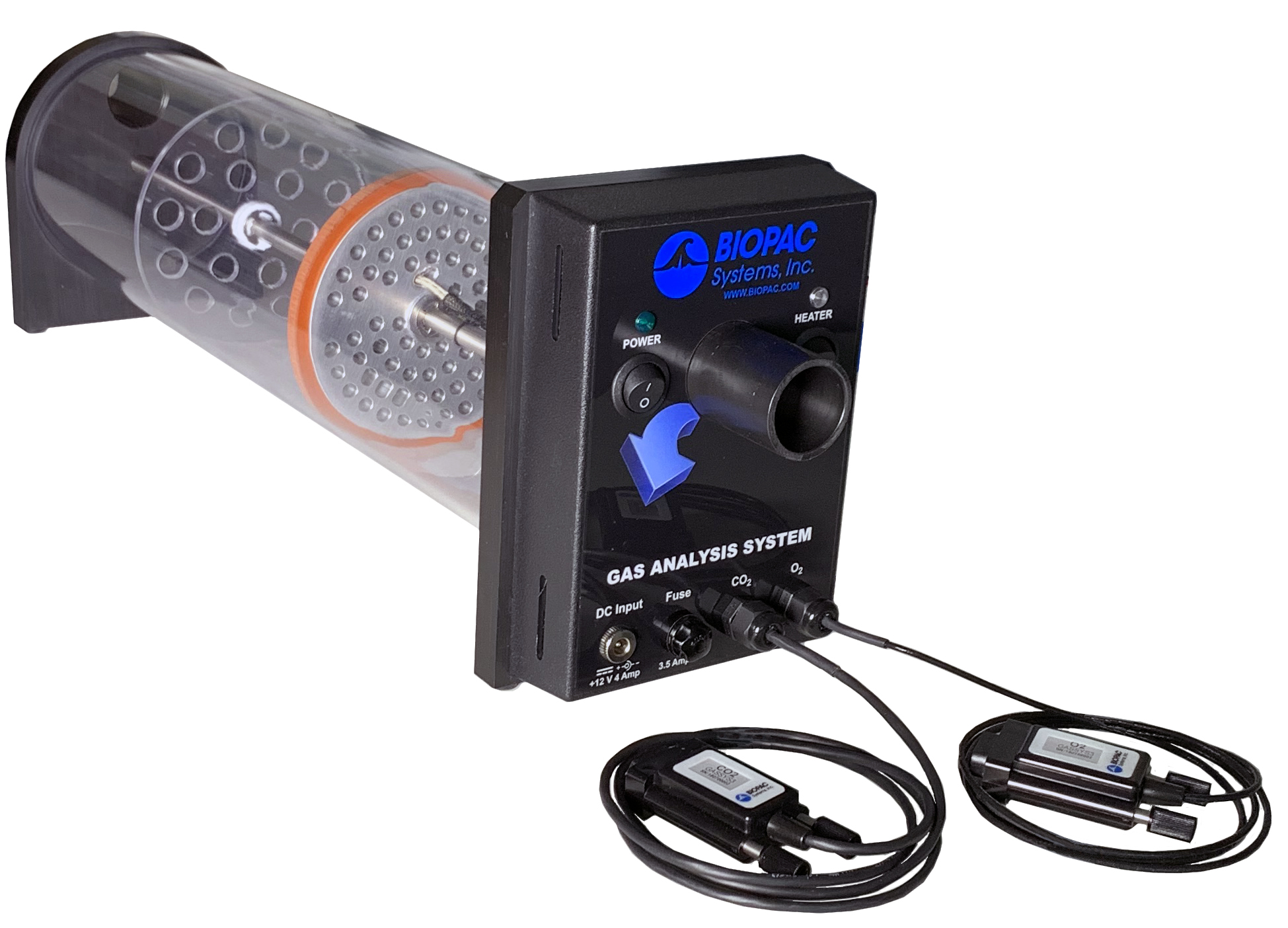






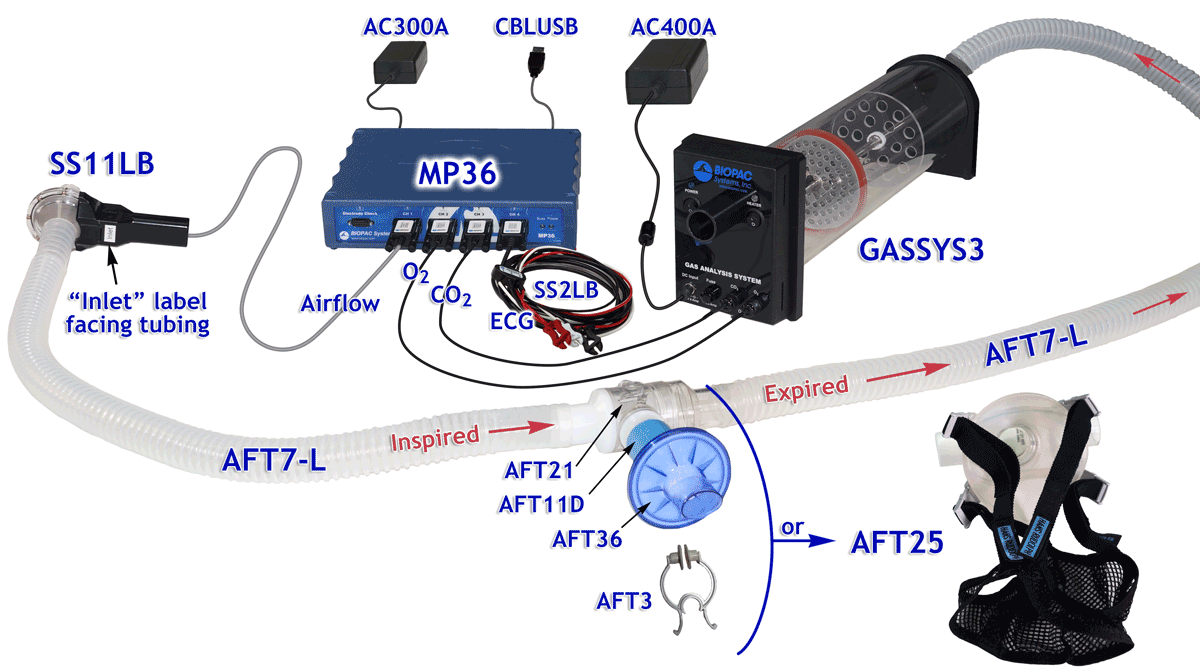
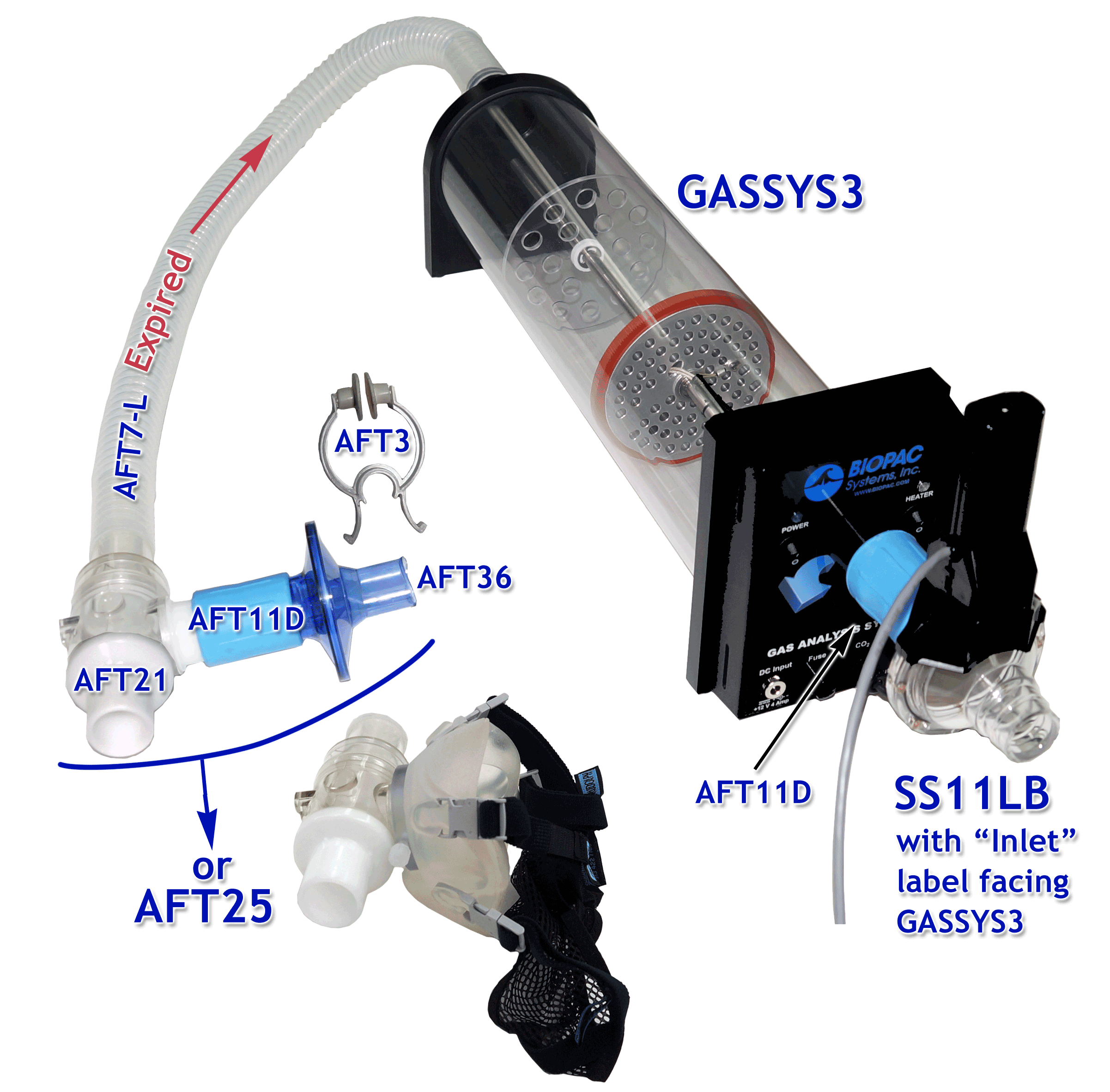
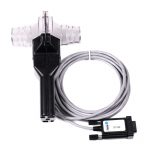
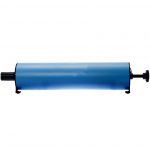
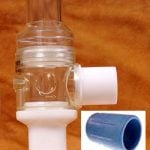
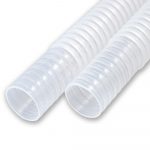
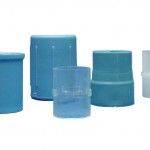
Stay Connected